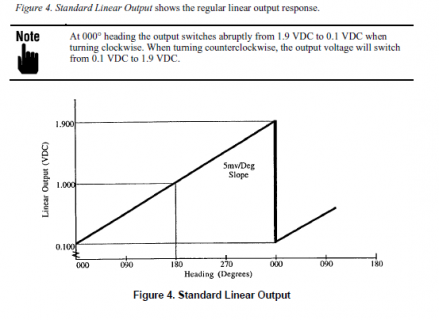Seamaster101
Member
Hi all,
here we go, my first post on this board.
I'm working on a marine tilt compensated rate compass project. So far, so good, but I need to output sine/cosine analog signal for heading reference of an older radar and autopilot.
Initially I started with Teensy 3.2 and got the compass code, as well the output in NMEA2000 (sinilar to CAN bus) and NMEA0183 protocols (RS232) working. Then due to only one DAC port availability on the Teensy 3.2, I ordered nice little board called Butterfly. Unfortunately this board is kind of new and missing the low-level library for it's CAN bus, so I couldn't make the NMEA2000 libraries working. So I'm back to Teensy now. it all works well, I can output everything except second analog signal for the cosine of the heading. I know that the specs says one DAC output, but while diggin' in analog.c https://github.com/PaulStoffregen/cores/blob/392c93cb87548d6ed90d3df2affa4963cbbbbe09/teensy3/analog.c file on teensy github, I noticed that there are two functions:
void analogWriteDAC0
void analogWriteDAC1
So I decided I should ask... one never know there might be some controller pins that didn't get routed to output. I was wondering if there is a second DAC on the chip and i can modify the schematic to pull the second DAC port out (of course if it exists). This will make my DAC (oops day) and my life much easier...
Can anyone help please?
here we go, my first post on this board.
I'm working on a marine tilt compensated rate compass project. So far, so good, but I need to output sine/cosine analog signal for heading reference of an older radar and autopilot.
Initially I started with Teensy 3.2 and got the compass code, as well the output in NMEA2000 (sinilar to CAN bus) and NMEA0183 protocols (RS232) working. Then due to only one DAC port availability on the Teensy 3.2, I ordered nice little board called Butterfly. Unfortunately this board is kind of new and missing the low-level library for it's CAN bus, so I couldn't make the NMEA2000 libraries working. So I'm back to Teensy now. it all works well, I can output everything except second analog signal for the cosine of the heading. I know that the specs says one DAC output, but while diggin' in analog.c https://github.com/PaulStoffregen/cores/blob/392c93cb87548d6ed90d3df2affa4963cbbbbe09/teensy3/analog.c file on teensy github, I noticed that there are two functions:
void analogWriteDAC0
void analogWriteDAC1
So I decided I should ask... one never know there might be some controller pins that didn't get routed to output. I was wondering if there is a second DAC on the chip and i can modify the schematic to pull the second DAC port out (of course if it exists). This will make my DAC (oops day) and my life much easier...
Can anyone help please?


